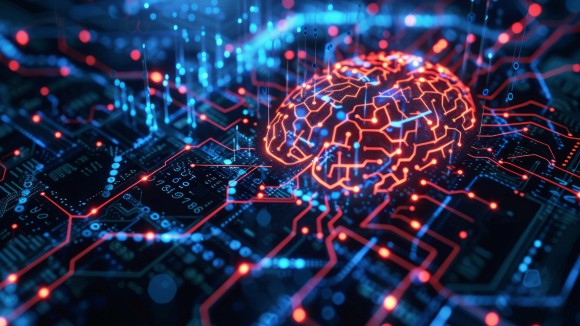What Is Artificial Intelligence? A Beginner’s Guide
Artificial Intelligence (AI) is one of the most talked-about technologies in the 21st century. From smart assistants like Siri and Alexa to self-driving cars and personalized Netflix recommendations, AI is becoming an integral part of our lives. But what exactly is AI, and why is it so important? This beginner’s guide will break it down in simple terms.

What Is Artificial Intelligence?
Artificial Intelligence (AI) refers to the simulation of human intelligence in machines that are designed to think, learn, and problem-solve like humans. In other words, AI enables machines to perform tasks that typically require human intelligence—such as recognizing speech, making decisions, translating languages, or identifying images.
Types of AI
AI can be broadly classified into three categories:
1. Narrow AI (Weak AI)
This is the most common form of AI used today. It is designed to perform a specific task, such as voice recognition or internet searches. Examples include:
Google Search
Siri or Alexa
Spam email filters
2. General AI (Strong AI)
This type of AI would have the ability to perform any intellectual task that a human can do. It doesn’t exist yet, but researchers are working toward it.
3. Superintelligent AI
A theoretical concept, this is AI that surpasses human intelligence in all aspects. While it’s still a long way off, it raises important ethical and safety questions.
How Does AI Work?
AI works by processing vast amounts of data, identifying patterns, and making decisions based on the information. Key technologies that power AI include:
1. Machine Learning (ML):
A subset of AI that enables machines to learn from data and improve over time without being explicitly programmed.
2. Deep Learning:
A more advanced form of ML that uses neural networks (inspired by the human brain) to analyze complex patterns in data.
3. Natural Language Processing (NLP):
This allows AI to understand, interpret, and generate human language. It’s used in chatbots, language translators, and voice assistants.
4. Computer Vision:
Enables machines to interpret and make decisions based on visual input such as photos or videos.

Real-Life Applications of AI
AI is no longer a futuristic idea. It’s already embedded in many areas of our daily lives:
Healthcare: AI helps doctors detect diseases early, especially in fields like radiology and diagnostics.
Finance: AI detects fraud, automates trading, and manages customer service.
Retail: AI powers personalized shopping experiences and inventory management.
Transportation: Self-driving cars, route optimization, and traffic prediction use AI.
Entertainment: AI recommends movies and music based on your preferences.
Benefits of AI
Efficiency: AI can process data faster and more accurately than humans.
24/7 Availability: Unlike humans, AI systems don’t need breaks or sleep.
Reduced Human Error: AI can minimize mistakes in tasks like data entry and analysis.
Personalization: AI tailors services to individual users, improving satisfaction.
Challenges and Concerns
Despite its benefits, AI poses certain challenges:
Job Displacement: Automation could replace some jobs, especially repetitive ones.
Bias and Fairness: AI systems can inherit biases from the data they’re trained on.
Privacy: AI relies on large data sets, raising concerns about how our data is collected and used.
Ethical Issues: Decisions made by AI—especially in critical areas like healthcare or justice—must be fair and explainable.
The Future of AI
AI is still evolving. In the coming years, we can expect it to become even more advanced and integrated into more aspects of our lives—from personalized education to climate change modeling. The key will be to use AI responsibly, ensuring it benefits everyone while minimizing risks.

Conclusion
Artificial Intelligence is more than just a buzzword—it’s a powerful tool that’s shaping the future. Whether you’re a student, professional, or curious mind, understanding the basics of AI can help you better navigate and thrive in a rapidly changing world.

